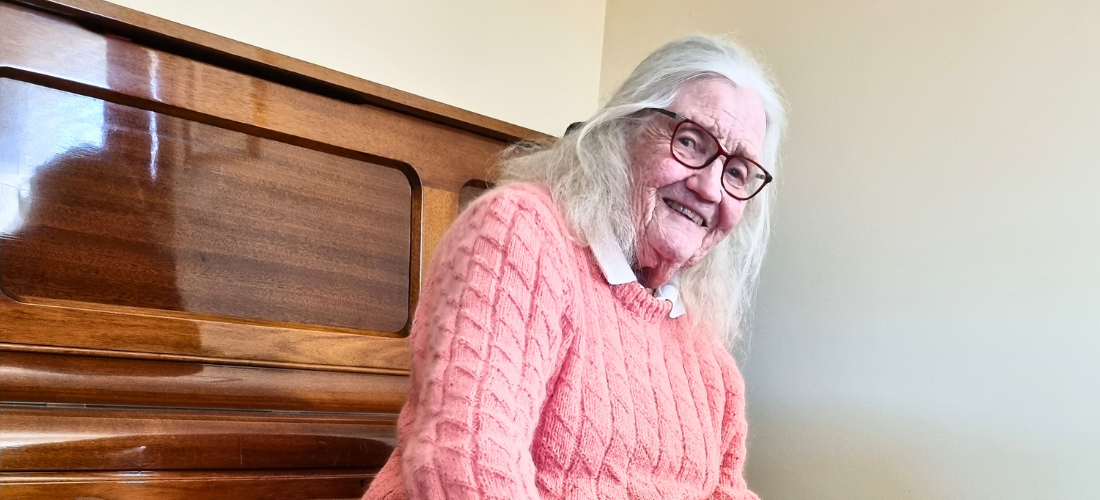“I think Macular Disease Foundation Australia has done a great job”
Joe from Queensland is happy to hear that both the Government and the Opposition have rejected an independent Medicare Benefits Scheme Taskforce recommendation to cut the Medicare rebate for the treatment that saves his sight.
Before sight-saving eye injections arrived in Australia in 2007, most people diagnosed with wet age-related macular degeneration (AMD) went blind – often rapidly.
Fifteen years later, this breakthrough treatment has transformed the lives of countless Australians. They have maintained their vision and enjoyed active lives long after diagnosis.
One of them is Joe M from Taringa, Queensland, who’s benefitted from eye injections for more than a decade.
Eye injections critical for independence
While wet AMD has claimed the sight in his right eye, an injection every six weeks preserves the use of his left.
Although he’s given up his driving licence, Joe (83) can still read and write with the help of low-vision aids – as well as his regular eye injections.
“They’re absolutely critical for me to be able to live independently. Absolutely critical,” Joe says.
“I can read and do a lot of the other things with the help of the aids. But without the eye injections, I’d 100 per cent lose sight, and none of these devices that are so helpful to me would be of any use.”

Joe is out of pocket almost $500 for his injections every six weeks. He also has to pay for a scan to monitor the eye.
And a recommendation by the independent Medicare Benefits Schedule (MBS) Review Taskforce for Ophthalmology to cut the Medicare rebate for sight-saving eye injections threatened to make treatment even more expensive.
Impact of a rebate cut
Economic modelling commissioned by MDFA estimated that the proposed 69 per cent cut would trigger out-of-pocket costs for wet AMD patients to balloon from the current $1,900 per year to $3,900 per year – double if the patient receives injections in both eyes.
The cut would have resulted in an additional 47,000 Australians experiencing permanent vision loss or blindness in the next five years.
“I’d sacrifice a lot of things to continue the treatment to save my eyesight. If I was put in a situation – do I want my eyesight or do I want to own my house? – I’d rather have my eyesight,” Joe says.
I get the blind pension, and a fair whack of it goes into things like taxi fares to the ophthalmologist and paying for the injections.
Joe, Queensland
However, in a big win for the macular disease community, both major parties committed to rejecting the recommended cut if they won office after the Federal Election.
At the start of Macula Month in May, MDFA launched a media campaign to share the stories of people like Joe, who depend on eye injections to maintain their eyesight.
Now, Health Minister Greg Hunt and Shadow Health Minister Mark Butler have both confirmed that their parties will not consider this recommendation when either form the next Government.
“I think it’s good news, especially for people on a pension,” Joe says.
“I’m very pleased – and I’m very happy to work with MDFA.
“I think Macular Disease Foundation Australia has done a great job.”
Still work to be done
While Joe is happy that our political leaders have listened to the concerns of the macular disease community, there is still more work to be done to improve access to eye injections.
As well as cost, transport is another major obstacle to sight-saving treatment. Many people in regional Australia struggle to find an ophthalmologist where they live, and 15 per cent of patients travel more than one hour to their appointments.
“I believe that my ophthalmologist gets patients from as far away as Mackay and Townsville,” Joe says.
“I’m fortunate that I live a 30-minute taxi ride away from the clinic, but there’s a lot of people that aren’t that fortunate.”
Posted: 3 May 2022
















